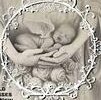Choosing Burial Gowns For Viewing and Burial Attire
One of the most difficult things to do when planning a funeral is selecting your loved one’s viewing and burial attire. This is especially true if your loved one did not make their wishes known. However, there are some guidelines you can follow to ensure that your loved one is dressed and prepared for their service in a way that honors them. For instance, many people choose to dress their departed loved ones in clothing that resembles what they would wear at home. This may include a dress, sweater or even pyjamas. Other clothing options can also be used as viewing and burial attire such as a suit or tuxedo. Funeral directors often have a selection of burial gowns that can be worn to honor your departed loved one. These garments are typically made from lightweight fabrics such as cotton or linen and are designed to drape easily over the body. This is an important feature as it makes it easy for loved ones to put on the gowns without adding too much stress to an already emotional event. Additionally, burial gowns are designed to allow your loved ones to move naturally while in the casket which can help them feel more comfortable during a visitation and during their final resting place. For those who wish to dress their loved ones in clothing that they would normally wear at home, there are several things you should consider before making your choice. You should consider their style and how they tended to dress in life, as well as any specific needs or preferences you have for them. For example, were they someone who preferred formal dressing or did they take a more casual approach? This can give you a clue as to what they might want for their own final outfit. When choosing accessories, it is important to remember that a person’s appearance will be significantly altered by the embalming process. For this reason, it is best to avoid jewelry that requires a piercing. In addition, it is not advisable to bury your loved one with shoes. This is because shoes can not be seen in the casket and they can be difficult to get on the body, which is often swollen and rigid. For this reason, some families choose to forego footwear altogether. However, some may opt to add a pair of sandals or slippers for convenience. Another thing to keep in mind is that it is generally not a good idea to bury your loved one with any jewelry they might wear, since the necklace may end up being lost or misplaced in the casket. While some people prefer to bury their loved ones with personal items like favorite books or wedding rings, it is best to consult your funeral director about what they recommend. In general, a few small personal items will be acceptable as long as they are not too large to fit inside the casket and do not add too much weight.
